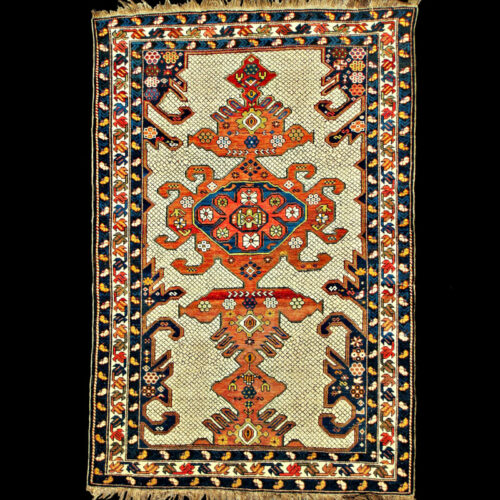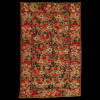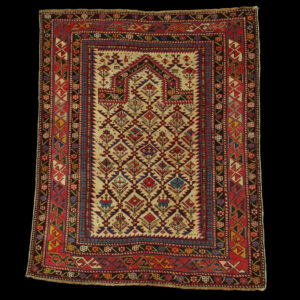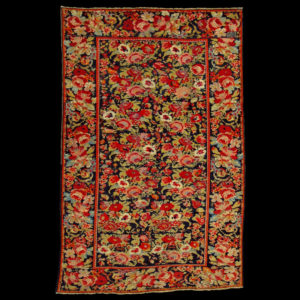- Item features
- Comment
- Auctions
- Request information
A rare Shirvan Kuba rug, woven in a mountainous settlement located in the northeast Caucasus: Gymyl. Following the opinion of some scholars, the Gymyl composition could have originated in Tabriz, as early as the 16th and 17th centuries, but this remain doubtful. The relationship with the Malayer rugs of Iran is, however, unquestionable.
The rarely seen diamond lattice, floating on the broken white ground, hosts an elegant honcha medailon and four corner designs of identical pattern, all this creates a unique three-dimensional effect. According to the famous caucasian scholar Kerimov, op. cit., honcha means a “present served on a tray”. The central light-brick / orange medaillon, referred to as turanj (a kind of citrus fruit), contains two concentric medaillons, the outer of wich is in blue and the innermost in pink. The medaillon has two appendages of different sizes, of which, the largest, is connected to another one, thus creating the only asymmetry in the otherwise totally simmetrical design.
The frame is substantial: a white “Two-Petal Calyx Meander” border, is flanked by two brown “Carnation” secondary borders, typical of this production.
A very similar rug is present (inv. n.884) at the “Carpet and Azerbaijan’s Folk Art Museum” in Baku, capital of the caucasian rugs’ homeland.
Literature / comparison specimen see:

















